Kyoto University Rare Materials Digital Archive Fund
- To share and preserve the wisdom of our ancestors for us and future generations -
It is one of Kyoto University Library Network's missions to securely preserve the rare book and manuscript collections Kyoto University holds and provide them for the use of researchers, in order to support academic research and contribute to society. As a means to share the information described in these rare materials more widely, Library Network has been digitizing them and making the data available on the internet. You may have seen some of the images, for example, on a history textbook at school or on a tourist brochure when sightseeing.
Many rare materials have become fragile through a long period of time and not everybody can take them in their hand as they want. However, if these rare materials are digitized and open to the public on the internet, we can learn the wisdom of our ancestors described there even at home. Still, many rare materials are waiting to be digitized, because the digitization process requires so much care and cost to restore the damaged part of the rare materials and to take digital photos of them with the utmost care for their physical conditions.
This fund will support the digitization of the rare materials Kyoto University holds and open access to the digitized data in "Kyoto University Rare Materials Digital Archive". The digitized data, as a common property of society, is freely reusable for your creative activities. We hope to contribute to the promotion of academic research and the development of education and culture by digitizing the rare materials handed down to our generation and making them available to the world, while preserving the original materials for future generations.
Your kind understanding and support would be greatly appreciated.
Kyoto University Rare Materials Digital Archive Fund - Donor List
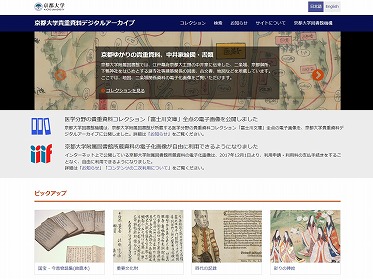
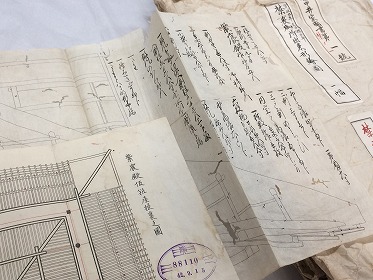
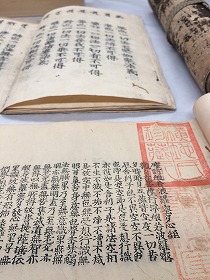
Fund Applications
Your donation will be used for the following purposes.
| Category | Content |
|---|---|
| Restoration of the rare materials | Restoration of the damaged part of the rare materials |
| Digitization of the rare materials | Digital capture of the rare materials, creation of their metadata and ingest of the digital data into the open archive system |
Digitization realized by this fund
[AY2018] Illustrated plans regarding the accessions of the Emperors during the Edo Period from Nakai Collection newly digitized and released
[AY2019] Physics Textbook Dr. Hideki Yukawa Used, “Water Margin” Takizawa Bakin Read And Book Of Aquatic Life In Lake Biwa Newly Released
[AY2020] The Kikutei/Imadegawa Family’s Collection newly digitized: Portraits, A Family Tree Scroll And A Diary
[AY2021] 49 plates of map from Kiheitai Nikki (奇兵隊日記) have been newly released
[AY2022] Five Of Oriental Maps And Star Charts Have Been Newly Released
Donor Benefits
We sincerely thank you for supporting this fund. As a token of our appreciation, we have prepared the following benefits in recognition of our donors.
Benefits from Kyoto University Fund
Please refer to this site.
Benefits from Kyoto University Library Network
| Donation amount | Library card | Others |
|---|---|---|
| JPY10,000 or more | - |
|
| JPY500,000 or more | Library card (valid for 5 years) | |
| JPY1,000,000 or more | Library card (valid for 10 years) | |
| JPY3,000,000 or more | Library card (valid for lifetime) |
* Donors issued with a library card are eligible to check out books and enter stack rooms (ref. the Main Library's regulation on honorary librarians (Japanese only)).
* If the donor is a corporation, one library card will be issued to the representative of the corporation.
* If the donor already has a library card with a different period of validity or different service privilege, the donor should choose which library card to be activated.
Tax Benefits (for donors in Japan)
Your donation is tax-deductible according to the Income Tax Law and the Corporation Tax Law of Japan.
Please refer to this site.
How to Donate
Donations to this fund can be made online with a credit card.
How the rare materials are digitized and appear on the internet
Using your donation, then, how are the rare materials digitized?
Here are the specific steps of the digitization and some of our rare collections to be digitized.
1. Selection of the materials
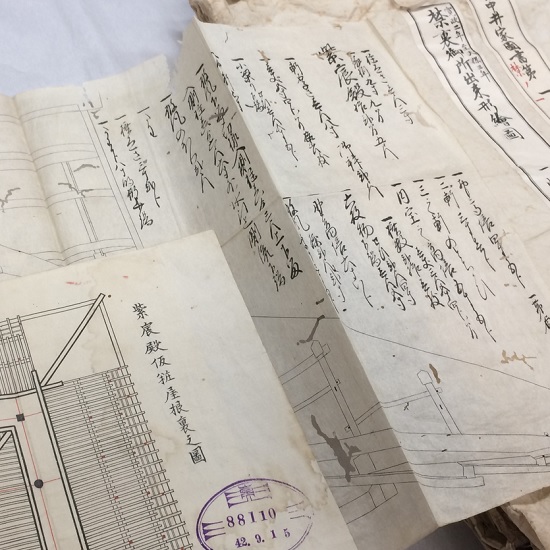
2. Restoration of the materials
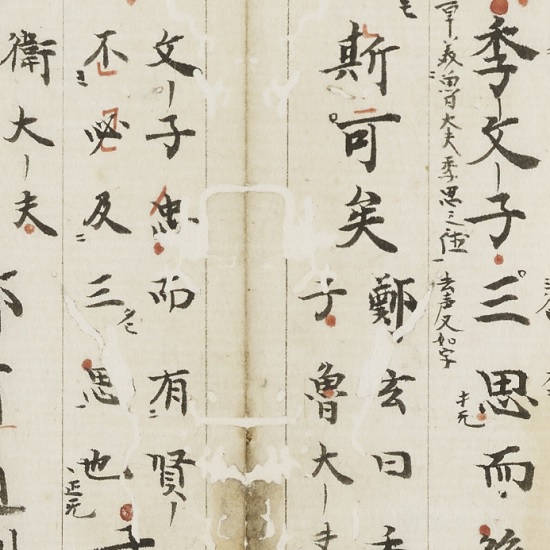
3. Digital capture of the materials
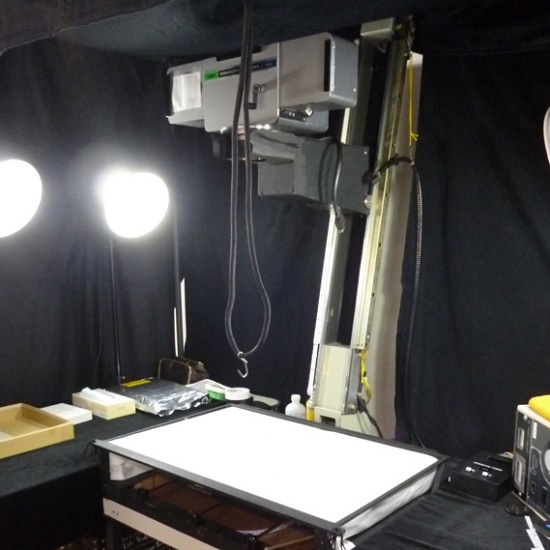
4. Creation of metadata
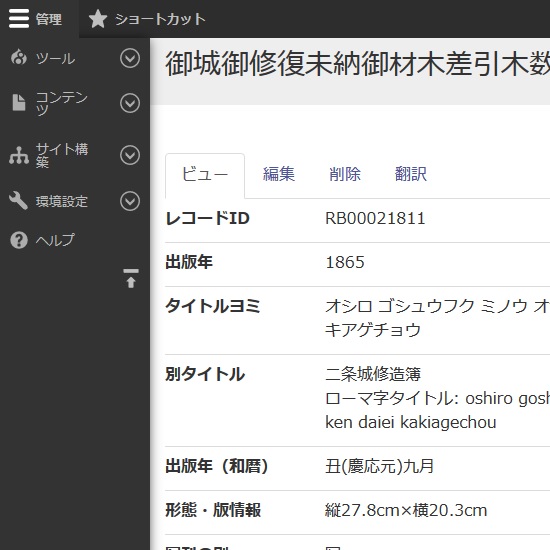
5. Data ingest into the open archive system
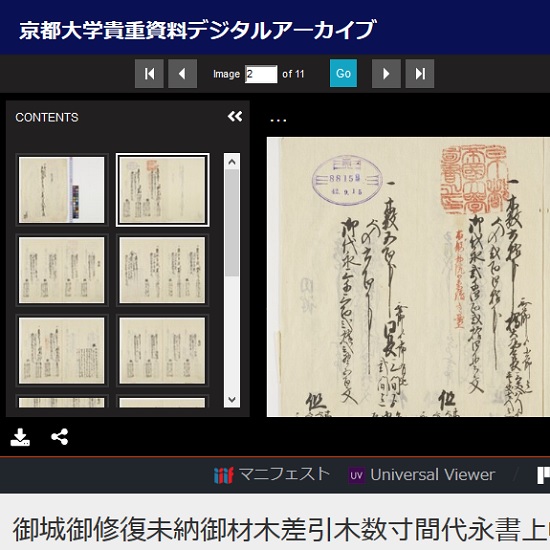
Rare collections to be digitized (to be followed by more)
Kikutei Collection
Kikutei Collection was deposited permanently to the Main Library, Kyoto University by late Marquess Kiminaga Kikutei in 1921 and 1922, and has been preserved and researched in the library. Thanks to the generous contribution from its owner, the collection, together with additional related documents, was donated to the Main Library and registered as the library’s holding in AY2020.
The Kikutei (Imadegawa) Family was founded by Kanesue (1281-1339; 兼季) and was one of the highest status court families called the Seiga (清華) family which members can be appointed as Daijō-daijin (太政大臣). They served with their biwa (Japanese lute) skills and the 12th head, Harusue (1539-1617; 晴季), is well-known for having worked as a mediator between Toyotomi Hideyoshi (1537- 1598; 豊臣秀吉) and the Imperial Court regarding Hideyoshi’s appointment to Kanpaku (関白).
The collection counts 1,833 and includes records of the Kikutei Family, in particular books on music, as the family served the imperial court with their knowledge and skills on music, and documents on the customs and traditions of the imperial court. One example of interesting historical records is “Tokitsugu-kyo-ki (言継卿記)”, the year of 1576 part of a diary written by a court noble Yamashina Tokitsugu (1507-1579; 山科言継) during the warring states period (16th century). The collection also has a very rare old manuscript copy of “Bunkidan (文机談).”
This collection is highly expected to be prioritized for investigation, restoration and digitization.
Nakai Collection
Nakai Collection consists of about 2,500 materials passed down through the Nakai family, Tokugawa Government's master carpenter family in Kyoto.
In 2018, a memorial service was held at Choko-ji Temple (Shimogyo-ku, Kyoto) to commemorate the 400th anniversary of the death of Masakiyo Nakai (1565-1619), a master carpenter who led the construction of Nijo Castle, Kyoto Imperial Palace and others, and his portrait and grave were made open to the public on the day. One thousand sixty-seven items related to the Kyoto Imperial Palace, 13 items related to the Tokugawa Government, 249 items related to Nijo Castle, four items related to the accessions of the emperors, and 69 old maps have already been digitized and made available in Kyoto University Rare Materials Digital Archive. Interesting examples among them are the plans of Nijo Castle that show the changes in the arrangement of the rooms as a result of a large-scale remodeling from 1624 to prepare for Emperor Go-Mizunoo’s visit to the castle in 1626. These make an indispensable resource for the research of Nijo Castle and the history of Kyoto.
The other materials to be digitized include the materials related to temples and shrines in and around Kyoto, the plans of other architectures in Kyoto and the documents related to the Nakai Family - all intertwined with the history of Kyoto.
Zokyo Shoin Collection
Zokyo Shoin Collection was formerly held by a Kyoto-based publisher, Zokyo Shoin, and is an invaluable resource for the research of the compilation and publication of the Tripitaka, complete Buddhist canon.
In Japan, the Tripitaka had long been copied by hand until the advent of printing. During the Edo Period, two woodblock editions, Tenkai-ban and Obaku-ban, were completely published, followed by the first metal type printing of the Tripitaka translated from Chinese into Japanese, Dainihon kotei daizokyo (Kokyo Shoin, 1881-1885), Nihon kotei daizokyo (Zokyo Shoin, 1902-1905) and Dainihon zoku zokyo (Zokyo Shoin, 1905-1912) in the Meiji Period.
Zokyo Shoin Collection held by Kyoto University Library today consists of the Buddhist sutras and books used as original text for Dainihon zoku zokyo and Nihon daizokyo (Zokyo Shoin, 1914-1921), those collected for a planned but unrealized sequel to Nihon daizokyo and Shinshu-related documents. It includes a comprehensive collection of writings by the founders and priests of every Japanese Buddhist sect, many of which are without equal. Moreover, the pages of the books in Zokyo Shoin Collection show the efforts made for the publication of the Tripitaka - the collation of a great amount of sutras and the repeated proofreading of drafts.
Tanimura Collection
Tanimura Collection was formerly collected and owned by Ichitaro Tanimura (1871-1936), a prominent businessman who served as chairman of Fujimoto Bill Broker Bank, currently Daiwa Securities Group Inc. In addition to his achievement in the business world, Tanimura was also known for his love for collecting rare books and befriended researchers of Kyoto University. Since he called himself Shuson (秋村), each book in this collection is stamped in red that reads "Shuson iai (秋邨遺愛)".
The collection mostly consists of Japanese and Chinese rare books, including manuscripts dating back as far as the Nara Period (the 8th Century) and a variety of editions of woodblock printings, such as Kasuga-ban, Koya-ban, Gozan-ban, Song Dynasty Edition and Ming Dynasty Edition.
Among Japanese literature books in the collection, the materials passed down through the Inawashiro Family are well-known in the academic community. The Inawashiro Family was founded by Kensai Inawashiro (1452-1510) who compiled Shinsen Tsukuba-shu (New Selection of Renga Poetry of Tsukuba) and the generations from Kenjun (1487-?) to Kendo (the Meiji Period) served the Date Family of Sendai Domain as renga (linked verse poetry) instructors. These materials systematically collected by the family are valuable for the research in renga poetry.
Contact
General Affairs Section, General Affairs Division, Main Library, Kyoto University
TEL: +81-75-753-2691
FAX: +81-75-753-2629
e-mail: kikin660[a]mail2.adm.kyoto-u.ac.jp (Please replace "[a]" with "@")
Yoshida Honmachi, Sakyo-ku, Kyoto 606-8501 JAPAN
